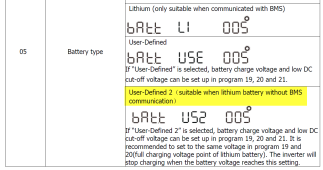This is known feature of Growatt inverters, and in fact many inverters, when you choose the lithium battery setting without battery communications.
The ideal charging profile of lithium without feedback does not permit float charging. So it's common in these profiles to stop charging completely, and start discharging until it goes below the trigger voltage to start bulk charging again.
Most users frustrated with this decision choose the user lead acid battery profile instead, and set the voltages to conservative values to prevent overcharging. The user lead acid profile does permit float charging, so rather than turning off charging, it reduces charging current to maintain the float voltage.
The ideal solution is to use batteries that communicate with the inverter, and tell it how many amps they can accept for charging - the inverter MPPT will then operate to provide current to the batteries and the AC inverter, and you'll have the desired outcome.
If you don't have batteries with a compatible communications protocol, then many users have chosen to use the lead acid charging profile. The downside is that it will continue to charge the batteries once they've reached their "float" voltage, and that's not the best way to handle lithium batteries. If you set the float voltage to a conservative value and turn off equalization, though, there are few other downsides, and the main downside isn't as harmful to the batteries as it might otherwise be.
Growatt and their suppliers will not support this usage, however, and if you intend to maintain your warranty then you will have to live with the consequences of that charging profile.
Another option is to buy a separate MPPT charger and charge your batteries through that, allowing the growatt to pull as needed for AC, and the external MPPT to charge as needed according to the power input and the battery voltage. This effectively bypasses the inverter's MPPT charger and its safe, but inefficient, user lithium charging profile.



